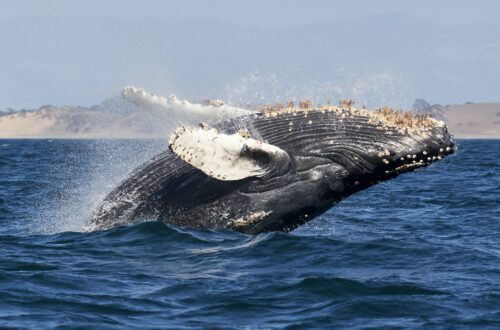Cape Town Chronicles: Exploring the Mother City.
Embarking on a journey to Cape Town proved to be an adventure of a lifetime. From the moment the plane touched down Table Mountain extended its majestic welcome. Every step in this vibrant city unfolded into a tapestry of experiences. It left an indelible mark on my soul. Sadly, my time there was limited to just a few days.

Table Mountain: A Majestic Prelude.
As the wheels of the plane kissed the runway, my eyes were drawn to the iconic Table Mountain, standing tall against the African sky. The next day, I found myself ascending its heights in a cable car. The view from the top was nothing short of spectacular. Cape Town sprawled beneath me, and the endless ocean stretched to the horizon, creating a feeling of standing on the world’s rooftop.
The cable car ride was a sensory journey in itself. The gradual ascent allowed time to absorb the changing landscapes. From the city’s urban sprawl to the untamed beauty of the mountain’s rocky slopes. Upon reaching the summit, the vastness of the panoramic views opened up, revealing not only the city below but also the lush landscapes surrounding Table Mountain.
Beyond the scenic vista, the Table Mountain National Park offered hiking trails that crisscrossed through fynbos-covered slopes. The diversity of flora and fauna became a captivating exploration. Each step unveils a new facet of this natural wonder. The rock formations, shaped by centuries of wind and rain, told a geological story that echoed through the ages.
The Platteklip Gorge trail.
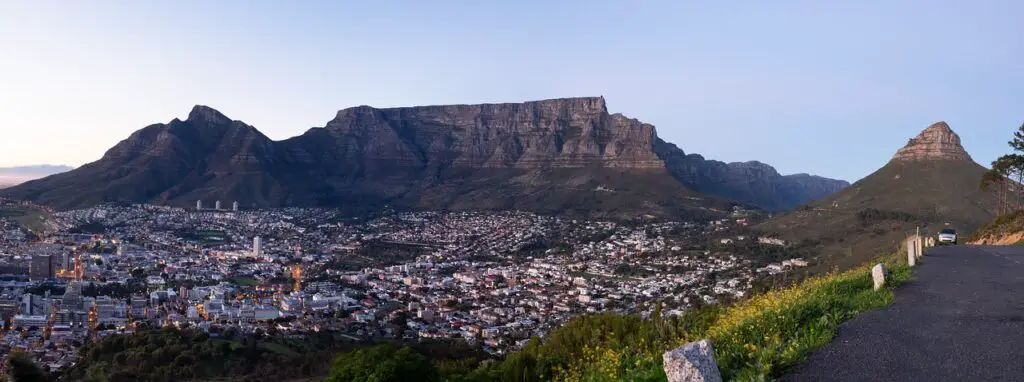
For those seeking a more active adventure, Table Mountain provides an array of hiking routes catering to various fitness levels. The Platteklip Gorge trail, a challenging ascent, rewards hikers with breathtaking views of the city and coastline. At sunrise or sunset, the mountain transforms into a canvas of colors. A magical atmosphere for those who make the trek.
V&A Waterfront: A Cultural Feast.
Venturing into the heart of Cape Town’s vibrant culture led me to the lively V&A Waterfront. The bustling marketplace not only offered an array of local delights but also provided a captivating view of the working harbor. It was a sensory delight, where the city’s pulse resonated through the air.
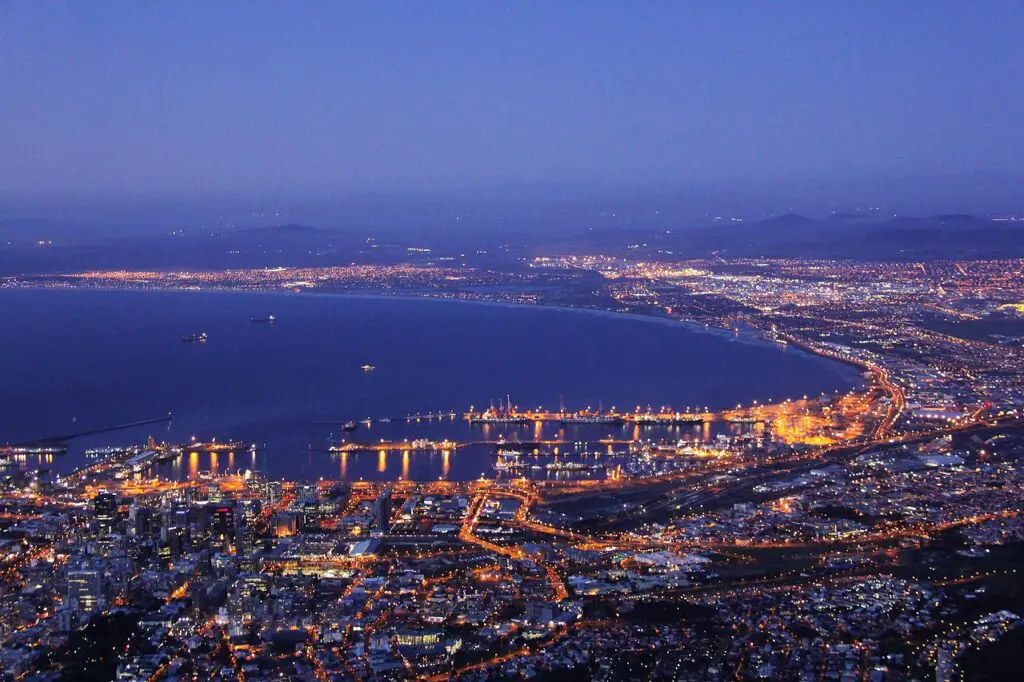
Exploring the V&A Waterfront was akin to navigating a cultural mosaic. From artisanal crafts to the aroma of diverse cuisines, every corner seemed to tell a story. The vibrant energy of street performers added a lively backdrop, creating an immersive experience in the heart of Cape Town’s cultural hub.
For those with an appreciation for art, the Zeitz Museum of Contemporary Art Africa (MOCAA), located at the V&A Waterfront, is a testament to the city’s thriving creative scene. Housed in a repurposed grain silo, the museum showcases a diverse collection of African contemporary art, providing a thought-provoking journey through the continent’s artistic expression.
The Two Oceans Aquarium.
The Two Oceans Aquarium, nestled within the Waterfront, is a window to the rich marine life that thrives in the convergence of the Atlantic and Indian Oceans. Watching the graceful dance of sharks, and the vibrant colors of coral reefs. The playful misbehavior of penguins added a marine dimension to the city’s cultural allure.
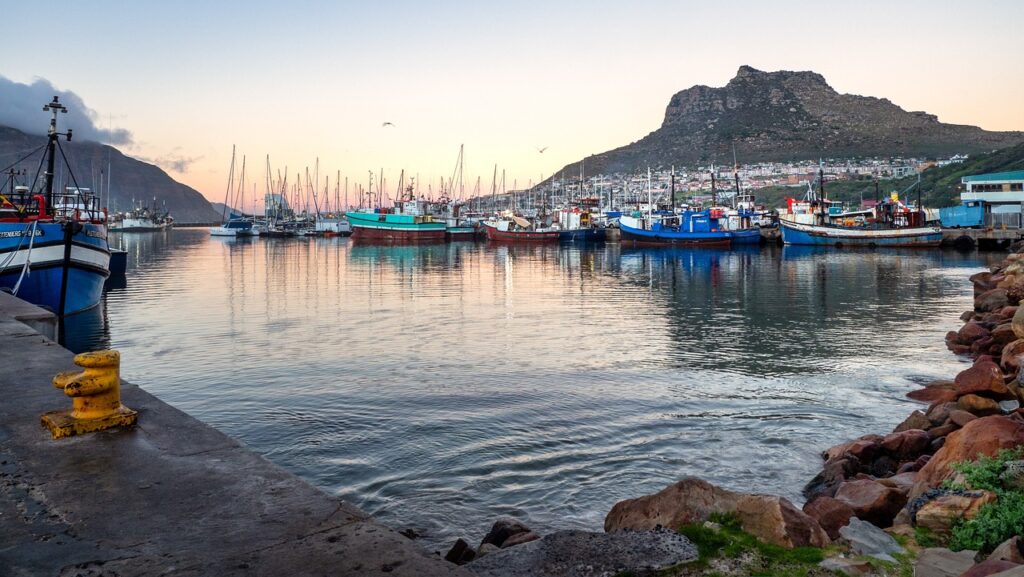
Cape Peninsula Drive: Coastal Wonders.
A scenic drive along the Cape Peninsula took me through Hout Bay, Simon’s Town, and the adorable penguins of Boulders Beach. The coastal scenery unfolded like a visual masterpiece, with each turn revealing new wonders. The journey became a symphony of waves, cliffs, and charming seaside towns.
Hout Bay.
Hout Bay, with its rugged cliffs and bustling harbor, offered a glimpse into the local fishing culture. A visit to the Bay Harbour Market allowed a taste of artisanal creations and live music against the backdrop of panoramic ocean views.
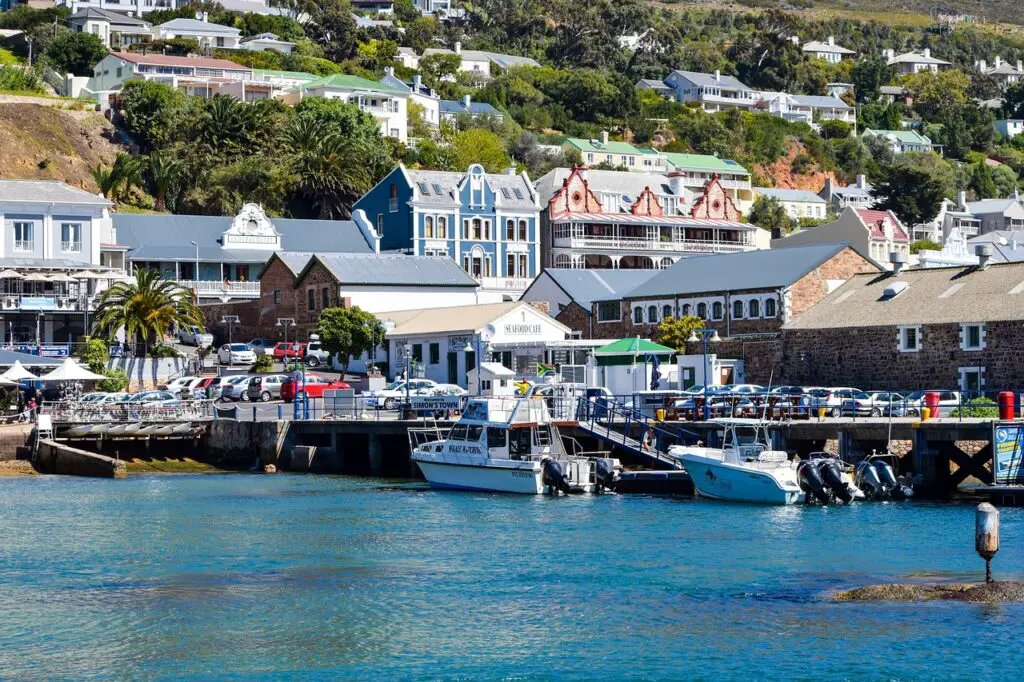
Simon’s Town.
With its colonial charm, invited exploration of historical streets and naval heritage. The South African Naval Museum, situated in the heart of Simon’s Town, housed a fascinating collection that chronicled the country’s maritime history. In addition, the cobbled streets with colorful houses added a picturesque charm to this coastal gem.
Boulders Beach.
Boulders Beach is home to a colony of African penguins. A touch of playfulness and wildlife to the coastal adventure. Walking along the boardwalks, and observing these charismatic creatures in their natural habitat, brought a sense of connection to the delicate balance of ecosystems along the peninsula.
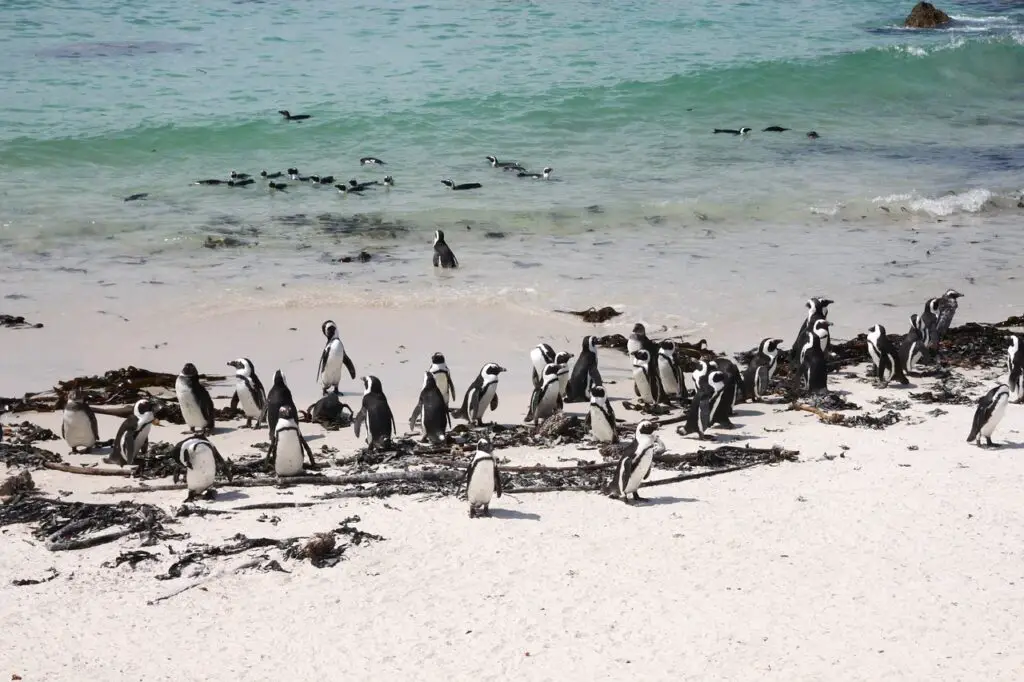
Specifically for those seeking active exploration, the Cape Peninsula offers cycling routes that wind along the coastline. Providing a unique perspective of the rugged cliffs and pristine beaches. The Cape Point Nature Reserve, located at the tip of the peninsula, boasts hiking trails that lead to breathtaking viewpoints overlooking the meeting point of the Atlantic and Indian Oceans.
Robben Island: A Humbling Lesson in History.
Visiting Robben Island was a poignant experience. Offering a glimpse into South Africa’s tumultuous past. The tour through the former prison, where Nelson Mandela was once held, became a powerful history lesson. The echoes of resilience and the pursuit of freedom lingered in the prison cells. Leaving an indelible impression on my understanding of the country’s journey.
The ferry ride to Robben Island was a reflective journey across the waters, allowing time to contemplate the historical significance of the place. The guided tour through the prison revealed not only the harsh conditions endured by political prisoners but also the stories of resilience and hope that emerged from those confined walls.

The limestone quarry, where Mandela and his fellow inmates labored, stood as a testament to the indomitable human spirit. The small cell that housed Mandela during his imprisonment became a symbol of the triumph of justice over oppression. It was a sobering experience that underscored the importance of remembrance and the ongoing quest for justice.
Beyond the prison complex, Robben Island is also home to a diverse ecosystem, and guided nature walks provide insights into the island’s natural history. Birdwatchers can spot various species, including African penguins and seagulls while appreciating the tranquility that now defines this historically significant island.
Cape Winelands: A Sip of Elegance.
The Cape Winelands beckoned with their picturesque landscapes and charming towns like Franschhoek and Paarl. Each vineyard I visited had its unique story, from the meticulous process of grape cultivation to the art of crafting South Africa’s finest wines. It was a journey through the senses, where every sip told a tale of tradition and passion.
Franschhoek.
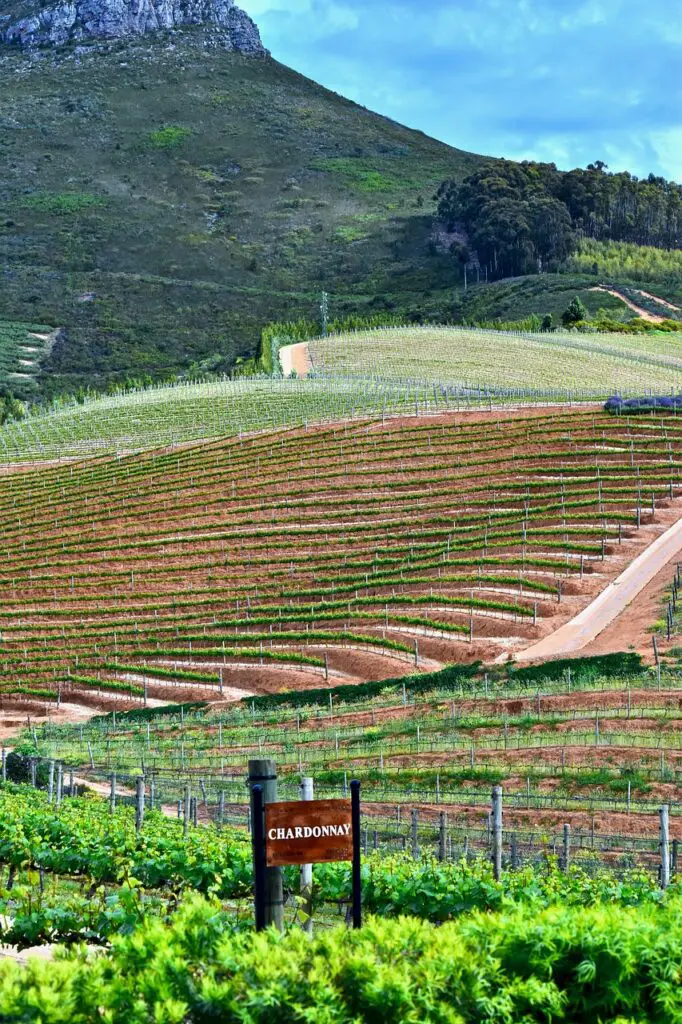
Franschhoek, known as the “French Corner,” unveiled its culinary excellence with vineyard-dotted landscapes. The town’s Huguenot Monument paid homage to the French settlers who brought their winemaking expertise to the region, shaping its vinicultural identity. Exploring the historic town, dotted with art galleries and boutique shops, added a cultural dimension to the wine-tasting journey.
Paarl.
Paarl, with its granite mountains, provided a backdrop to vineyards producing bold reds. The Paarl Wine Route, meandering through rolling hills and valleys, offered a sensory exploration of diverse varietals. The iconic Afrikaans Language Monument, perched on Paarl Mountain, provided a panoramic view of the surrounding vineyards, creating a visual ode to the region’s cultural and linguistic heritage.
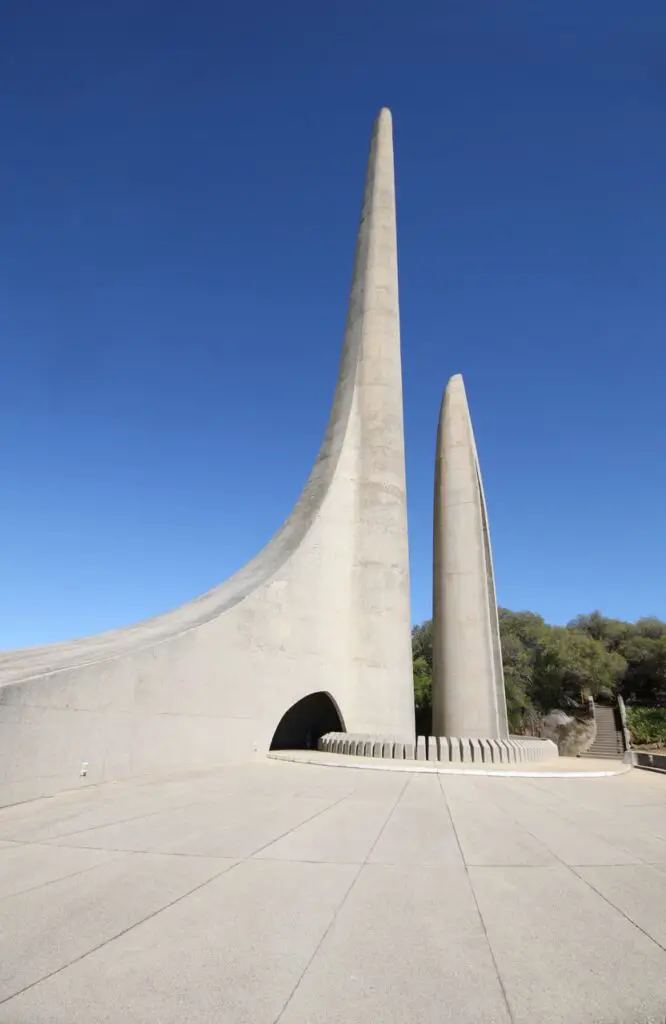
The wine estates became immersive experiences, offering tastings of exceptional wines. Additionally guided tours through the vineyards and cellars. Conversations with winemakers unveiled the intricate craftsmanship behind each bottle, from soil to bottle. The historic estates, some with centuries-old cellars, provided a glimpse into the evolution of winemaking in the Cape.
Furthermore, if you seek a more intimate connection with the winemaking process; some vineyards offer blending sessions, allowing visitors to create their personalized wine under the guidance of experienced vintners. These hands-on experiences provide a deeper understanding of the artistry involved in crafting each varietal.
Beyond the vineyards, the culinary scene in the Cape Winelands is a gastronomic delight. Franschhoek, often referred to as the “Gourmet Capital of South Africa,” boasts a collection of award-winning restaurants. From farm-to-table dining experiences to gourmet picnics in vineyard settings. Furthermore, the region offers a diverse array of culinary adventures.
However, the Cape Winelands are not only about wine and food; but also about immersing oneself in the rich cultural tapestry of the area. Art galleries, such as the Franschhoek Art House, showcase works by local and international artists, adding a touch of creativity to the scenic landscapes. Strolling through the charming streets, lined with oak trees and historic Cape Dutch architecture, evokes a sense of timeless elegance.
Kirstenbosch National Botanical Garden.
Nestled against the eastern slopes of Table Mountain, Kirstenbosch is a botanical paradise that showcases the unique flora of the Cape region. Strolling through the gardens, visitors encounter a diverse array of indigenous plants, including the iconic fynbos. The treetop canopy walkway offers breathtaking views of the surrounding mountains.
District Six Museum.
Located in the city center, the District Six Museum serves as a poignant reminder of the forced removals and displacement during South Africa’s apartheid era. The museum’s exhibits and personal narratives provide insight into the resilience of the community and the ongoing journey toward reconciliation.
Cape Town’s Beaches.
The Cape’s coastline is adorned with pristine beaches catering to various preferences. Camps Bay, with its trendy atmosphere and iconic Twelve Apostles backdrop, is perfect for sunbathing and beachside dining. Muizenberg, known for its colorful beach huts, is a hotspot for surfing enthusiasts.
Chapman’s Peak Drive.
This scenic coastal road between Hout Bay and Noordhoek offers breathtaking views of the Atlantic Ocean and rugged cliffs. A leisurely drive or hike along this route provides a perfect vantage point to appreciate the beauty of the Cape Peninsula.
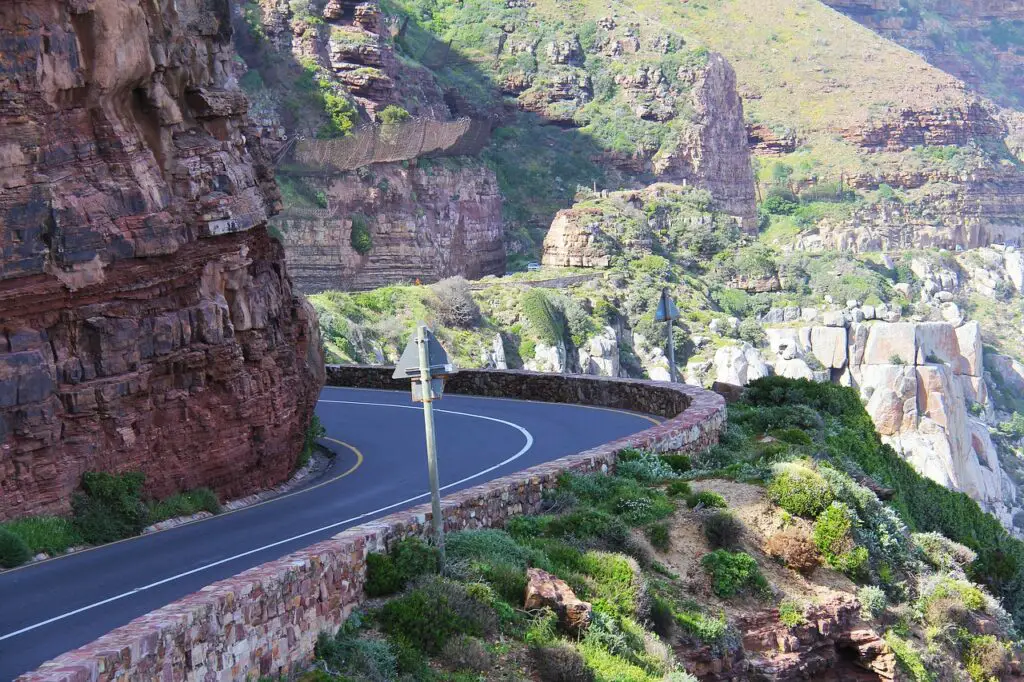
Cape Point and the Cape of Good Hope.
Journey to the southernmost tip of the Cape Peninsula, where the Atlantic and Indian Oceans meet. The Cape Point Lighthouse offers spectacular views, and a hike to the Cape of Good Hope provides a sense of standing at the edge of the continent.
Langa Township.
Besides for whom is interested in cultural immersion, a visit to Langa Township. A glimpse into the vibrancy and resilience of Cape Town’s local communities. Guided tours offer opportunities to engage with residents, visit community projects, and gain a deeper understanding of the township’s history.
Though my visit to Cape Town and its surroundings was brief, I made the most of it. I discovered a myriad of experiences that extended beyond the well-trodden paths. From the heights of Table Mountain to the historical echoes of Robben Island, and the vine-covered hills of the Cape Winelands, each corner revealed a unique facet of this captivating region.
Whether savoring the rich flavors of South African wines, immersing in the cultural vibrancy of the V&A Waterfront, or tracing the footsteps of history on Robben Island, Cape Town stands as a destination that seamlessly weaves together nature, culture, and history.
In every adventure, there was a thread of connection to the people, the landscapes, and the stories that shaped Cape Town’s identity. From the summit of Table Mountain to the cobblestone streets of Franschhoek, this journey was a celebration of the diversity and resilience that define this remarkable corner of the world.
In conclusion for those dreaming of a South African odyssey, may this comprehensive guide serve as an invitation to explore the multifaceted wonders that Cape Town and its surroundings have to offer. In each experience, may you find inspiration, connection, and the enduring magic that makes Cape Town an unparalleled destination.



